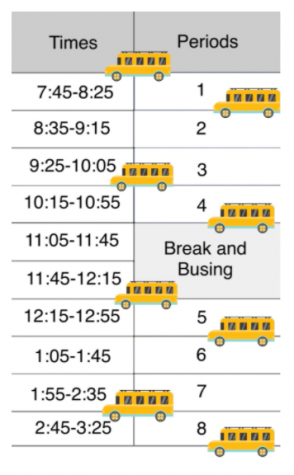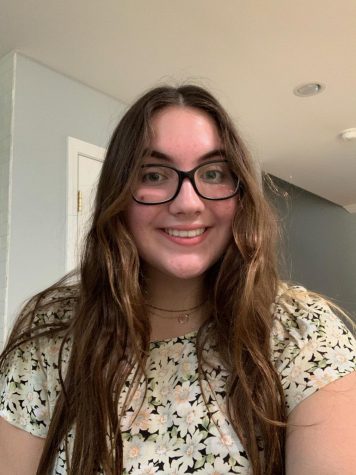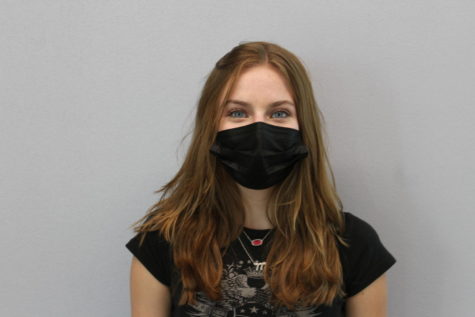Bus Upon a Time: How Buses Work Will During a Global Pandemic
A look into what bussing will be like for the new Patriot Hybrid Schedule
As the eighth period bell rings, students flow into the hallways; excited chatter bounces off the walls as they walk to their buses to head home after a long day of schoolwork. Buses were a way for students to relax and socialize on their way to and from school. Yet nowadays safety precautions have been put onto busses to keep students away from each other for their own protection.
With the occurrence of the COVID-19 pandemic Stevenson wanted to give students a flexible yet safe way to learn in person, so the new Patriot Hybrid Learning model was created and put into place. Due to this altered schedule, a need for transportation has developed, since it allows students to come in at least twice a week for half a day.
“We have 1200 kids who have said we [they] are thinking about coming back,” Principal Troy Gobble said. “We are allowing people to have the choice about whether they can come back, and you [students] don’t even have to come back all the time.”
Schools and buses had to shut down because of how contagious the virus is. Stevenson buses were often packed with students; thus, it was unsafe for buses to operate in this same manner during the pandemic. Now, with Stevenson on its way to reopen slowly, buses are being prepped to have students ride them once again.
To ensure student safety and to help lessen the possibility of community COVID-19 outbreaks, the student body has been split into three groups which are determined by living location. Given the bus routes that were designated for each area, many students will be with peers from their middle school.
“For instance, the blue group is Lincolnshire, that’s where my daughter and we live,” Gobble said. “That way when we are bringing the blue kids to and from campus, we only have a third of the campus area to get the buses to and back from, so we can shrink the amount of buses we use and they don’t have to drive as far.”
In each bus, there is a maximum of 12 students allowed at a time, and mask-wearing is strictly enforced. In order to be a part of a bus route, students are required to fill out a survey which can be located on the Stevenson website under Bus Routes. Their information is then sent to First Student, the bus company with which Stevenson collaborates, and a computer program determines the most logical routes for each group.
When navigating how to create busing schedules for the hybrid model, morning and afternoon sessions were created with four bus runs each. Stevenson came to the realization that they needed multiple bus routes to accommodate the multiple diverse student schedules.
Many students have first, fourth, fifth and eighth off due to lunch periods, study halls and free periods. To help prevent the spread of the Coronavirus, Stevenson did not want any students to be  on campus when not having an actual assigned class. The need to get students off campus during their off periods influenced extra bus routes being added to the school day to help transport students home.
on campus when not having an actual assigned class. The need to get students off campus during their off periods influenced extra bus routes being added to the school day to help transport students home.
While under the circumstances of the pandemic, Stevenson has tried to make buses as safe as possible. Some students have expressed that they do not mind riding the bus, while others still have their doubts.
“My personal reason as to being hesitant to use the bus would be that since buses are tightly closed spaces with not as much guarantee of students following COVID-19 guidelines,” Amal Naqvi ’22 said. “I would not want to put myself or my family at risk of the virus.”
Likewise, Gobble shared that the number of students who opted in for bus service is significantly less than the amount who said they were going to go back in person.
Although masks do help to halt the spread of the virus, another concern is that surfaces may increase transmission rates when on a bus or other public transit. If a surface contains the virus, it can be easily spread once that person touches their face, nose or eyes. The Centers for Disease Control and Prevention (CDC) has suggested means of making buses and other forms of public transportation safer given these concerns.
“Consider conducting daily in-person or virtual health checks,” the CDC said on December 31 on their website, when talking about COVID-19 Employer Information for Bus Transit Operators. “Make sure employees can maintain at least 6 feet of distance while waiting for screening if done on site.”
Stevenson has implemented both of these suggestions. To aid the safety of students and bus drivers, students must take a health survey and show it to administrators while standing six feet apart before entering the school. Stevenson did this in hopes of slowing down the spread of the virus. While riding the busses, students are required to wear masks and sit six feet apart from each other.
“I feel as if with more Stevenson students trying out hybrid and utilizing the bus, we will end up hearing about more experiences.” Naqvi said. “[We can] learn more of the reality from people’s day to day exposure of riding the bus.”



